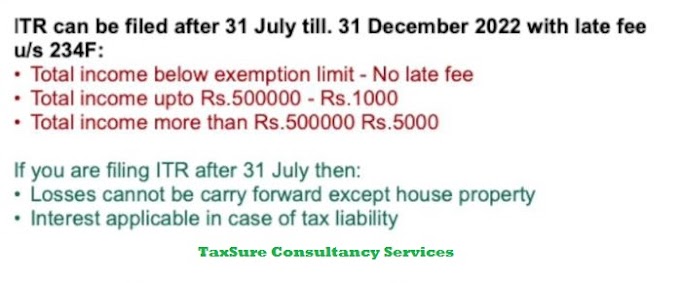Exports have been granted a beneficial treatment even under the Goods and Services Tax (GST) legislation. In terms of the GST legislation, exports are ‘zero rated supplies’ i.e. supplies on which the GST rate is fixed as ‘zero’. While exporting goods/ services, an exporter has the following options:
- Export goods/ services or both under a bond or letter of undertaking (LUT) without payment of tax
- Export goods/ services or both with payment of GST.
For Export of Goods
In terms of the GST legislation, export of ‘goods’ means taking goods out of India to a place outside India. An exporter of goods is required to undertake export of goods in terms of export procedure as prescribed under the Customs law and is required to ensure that following documentation and compliances are undertaken :
- Obtain an Import Export Code (IEC);
- Obtain an Import Export Code (IEC);
- Furnish a LUT or Bond in case exports are intended to be made without payment of taxes;
- Ensure that a robust Agreement/ Purchase Order is entered into with the recipient of goods for export of goods;
- Issue a tax invoice, typically containing the following details:
- Endorsement stating “supply meant for export on payment of integrated tax” or “supply meant for export without payment of integrated tax”;
- Name, address and GSTIN of the supplier;
- Invoice No. and date;
- Name and address of the recipient, address of delivery and country destination;
- HSN code of the goods along with description;
- Quantity of goods and unit;
- The total value of goods; and
- Signature of the supplier of the authorised signatory. File the shipping bill. It should be ensured that accurate details of the tax invoice are mentioned in the shipping bill;
- Details of export invoices are also required to be accurately furnished in the GST returns.
Further, exporters of notified goods to notified markets are also entitled for Duty Credit Scrip under the Merchandise Exports from India Scheme at notified rates (2% to 7%) on realized Free on Board (‘FOB’) value of exports in free foreign exchange or on FOB value of exports as given in the Shipping Bills in freely convertible foreign currencies, whichever is less. In addition, the benefit of refund under GST may also be explored.
For Export of Services
- In terms of the GST law services qualify as ‘export’ where:
- Supplier of service is located in India;
- Recipient of service is located outside India;
- Place of Supply (‘POS’) of service is outside India;
Payment for such service has been received by the supplier of service in convertible foreign exchange; and - Supplier of service and the recipient of service are not merely establishments of a distinct person
For cross-border transactions, unless specifically mentioned the default POS for services is the location of the recipient of service i.e. outside India. For specified services, POS is as follows:
- For services in relation to immovable property (eg. renting, construction, designing etc.) – POS is the location of such immovable property;
- For performance based services (eg. training programs, repair maintenance of goods or tour and travel) – POS is the place where such services are performed;
- For events – POS is where the event is conducted
It is relevant to note that in case of points a, b and c above in case the POS is in India, GST would be attracted even if the recipient of service is located outside India.
Another specified service is that where the supplier acts as an ‘intermediary’/ agent. POS in such cases is the location of the ‘intermediary’/ agent i.e. in India, accordingly same would also be eligible to GST. The concept of intermediary has opened a Pandoras box where most of the captive units exporting services have to face the wrath of litigations.
Accordingly, a service exporter should ensure documentation and compliance with respect to the following:
- Furnish a LUT or Bond in case exports are intended to be made without payment of taxes
- Ensure that a robust Agreement/ Purchase Order is entered into with the recipient of services for export of services;
- Issue a tax invoice typically containing the following details:
- Endorsement stating “supply meant for export on payment of integrated tax ” or “supply meant for export without payment of integrated tax”;
- Name, address and GSTIN of the supplier
- Invoice No. and date;
- Name and address of the recipient;
- HSN code of the services along with description
- The total value of services
- Signature of the supplier of the authorised signatory.
It must be ensured that the payments are received in convertible foreign exchange within the prescribed time period (typically one year from the date of export), else GST would be payable on the transaction. Further, robust documentation to prove the receipt of such payment (such as Foreign Inward Remittance Certificate, Bank Realisation Certificate etc.) should be maintained.
Further, exporters of notified services are also entitled for Duty Credit Scrip under the Services Exports from India Scheme (‘SEIS’) at a prescribed percentage (3%/5%/7%) of Net Foreign Exchange [i.e. Gross Earnings of Foreign Exchange minus Total expenses / payment / remittances of Foreign Exchange]. In addition, the benefit of refund under GST may also be explored. Further, although IEC is not a pre-condition for service exporters, however IEC is a pre-condition in case the exporter intends to claim benefit under SEIS.
It is therefore recommended that an exporter of goods/ services should ensure that complete and robust trail of documentation should be maintained to ensure that benefit of tax incentives granted by the Government for exports from India can be claimed.
Source: Economic Times.
(The writer, is Director, Nangia Advisors (Andersen Global). With inputs from Arjun Sobti.)





0 Comments